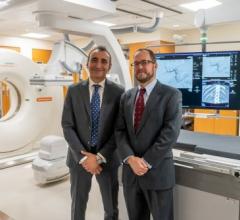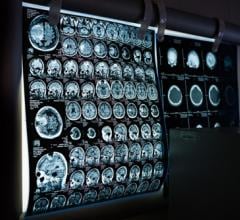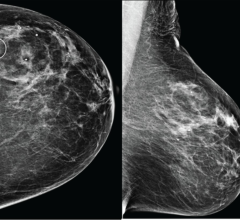August 18, 2010 - Researchers from Mount Sinai School of Medicine have for the first time developed a way to visualize coronary artery plaques vulnerable to rupture using multicolor computed tomography (CT), an innovation that may lead to better and earlier diagnosis of cardiovascular disease.
The data are published in the September issue of Radiology.
Ruptures of atherosclerotic plaques are the cause of nearly 70 percent of heart attacks. High-density lipoproteins (HDL), the “good” cholesterol, are drawn to plaques vulnerable to rupture and remove them from the arterial wall.
The Mount Sinai team harnessed HDL by encapsulating tiny gold particles within it and injected them into mice. By using a sophisticated multicolor CT scanner, the researchers were able to see the gold particles as the HDL was targeting macrophages, or the cells that cause inflammation in the arterial wall, therefore illuminating the location of the vulnerable plaques.
“The use of multicolor CT and gold nanoparticles to visualize plaque will revolutionize cardiac imaging,” said the research team leader, Zahi A. Fayad, Ph.D., professor of radiology and medicine and the director of the Translational and Molecular Imaging Institute at Mount Sinai School of Medicine. “The acquisition of this technology and development of this method will help us improve cardiovascular disease diagnosis in our patients, furthering our commitment to translational research. We look forward to continuing our study of this technology in the clinical setting.”
In addition to showing the impact of the gold particles, spectral CT can simultaneously distinguish calcium deposits and contrast agents used such as iodine, which is often used to identify stenoses, or the narrowing of arteries, informing the severity of atherosclerosis and heart attack risk.
“There is a significant unmet need for imaging technology that visualizes plaque vulnerable to rupture,” said the lead author of the work, David Cormode, Ph.D., postdoctoral fellow, Translational and Molecular Imaging Institute, Mount Sinai School of Medicine. “The fact that the multicolor CT technique shows the gold particles, iodine and calcifications, provides us with a more complete picture of the nature of the atherosclerotic arteries.”
Multicolor CT technology may also be beneficial in imaging other biological process and diseases, including cancer, kidney disease, and bowel diseases. The Mount Sinai team plans to continue studying the new scanner in additional animal studies and in humans.
For more information: www.mountsinai.org


 December 10, 2025
December 10, 2025 









